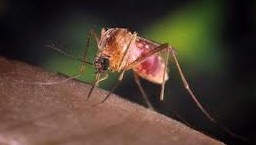 Recent information from the Centers for Disease Control and Prevention (CDC) indicate that cases of West Nile Virus infection, as well as cases of death from the West Nile Virus are up substantially. The agency data showed a 40% increase in cases of the virus nationwide over last week.
Recent information from the Centers for Disease Control and Prevention (CDC) indicate that cases of West Nile Virus infection, as well as cases of death from the West Nile Virus are up substantially. The agency data showed a 40% increase in cases of the virus nationwide over last week.
The number of cases of West Nile Virus stand at 1590 and have resulted in a total of 66 deaths across the United States. Cases of West Nile first turned up in the U.S. in 1999. The worst years for death from the west nile virus were reported in 2002 and 2003 when over 250 people died each year.
The CDC director, Lyle Peterson, announced on Wednesday this week that the agency expects this year to be the worst in terms of the number of cases of West Nile Virus. Despite the end of summer, the CDC expects the number of cases to continue to rise and reach a peak near the end of September to the first part of October.
Here are answers to a few of the commonly asked questions about the West Nile Virus:
How does West Nile Virus spread? The West Nile Virus is spread from mosquito bites.
What are the symptoms of West Nile Virus infection? Most people will actually have no symptoms of infection. Twenty percent of those infected will have mild symptoms of West Nile Virus which include fever, headache, body ache, and for some a skin rash and swollen lymph glands. In severe reactions to West Nile Virus, affecting less than one in a hundred, symptoms will include: headache, high fever, a stiffness in the neck, tremors, convulsions, and potentially coma or paralysis.
What are the best ways to protect against West Nile Virus? Since the virus is spread by mosquitos, protecting against the west nile virus means avoiding and protecting against mosquitos. The CDC recommends what they call the “Four D’s” approach to West Nile Virus prevention which is to: use DEET mosquito repellents, Dress in long sleeves and pants, stay indoors at Dusk and Dawn, and Drain standing water around your home which is where mosquitos breed.
![Herbal Reference Substances are Key to Everyday Products <!-- AddThis Sharing Buttons above -->
<div class="addthis_toolbox addthis_default_style " addthis:url='http://newstaar.com/herbal-reference-substances-are-key-to-everyday-products/3512112/' >
<a class="addthis_button_facebook_like" fb:like:layout="button_count"></a>
<a class="addthis_button_tweet"></a>
<a class="addthis_button_pinterest_pinit"></a>
<a class="addthis_counter addthis_pill_style"></a>
</div>When it comes to quality control testing and the development of new products, Botanical Reference Materials (BRMs), also known as Herbal References are critically important. To help companies ultimately obtain all-important FDA approval, the Food and Drug Administration provides in its guidance a recommendation that […]<!-- AddThis Sharing Buttons below -->
<div class="addthis_toolbox addthis_default_style addthis_32x32_style" addthis:url='http://newstaar.com/herbal-reference-substances-are-key-to-everyday-products/3512112/' >
<a class="addthis_button_preferred_1"></a>
<a class="addthis_button_preferred_2"></a>
<a class="addthis_button_preferred_3"></a>
<a class="addthis_button_preferred_4"></a>
<a class="addthis_button_compact"></a>
<a class="addthis_counter addthis_bubble_style"></a>
</div>](http://newstaar.com/wp-content/uploads/2021/02/Achillea_millefolium_flowers-100x100.jpg)
![Quality Electrochemical Biosensors are Critical for Medical, Food and Chemical Industry <!-- AddThis Sharing Buttons above -->
<div class="addthis_toolbox addthis_default_style " addthis:url='http://newstaar.com/quality-electrochemical-biosensors-are-critical-for-medical-food-and-chemical-industry/3512086/' >
<a class="addthis_button_facebook_like" fb:like:layout="button_count"></a>
<a class="addthis_button_tweet"></a>
<a class="addthis_button_pinterest_pinit"></a>
<a class="addthis_counter addthis_pill_style"></a>
</div>A number of industries have, at their core, a need to frequent or even continuous analysis of biological media. These include the medical and pharmaceutical fields, biotech firms, and food and chemical companies. To maintain quality standards and develop new products, these industries rely heavily […]<!-- AddThis Sharing Buttons below -->
<div class="addthis_toolbox addthis_default_style addthis_32x32_style" addthis:url='http://newstaar.com/quality-electrochemical-biosensors-are-critical-for-medical-food-and-chemical-industry/3512086/' >
<a class="addthis_button_preferred_1"></a>
<a class="addthis_button_preferred_2"></a>
<a class="addthis_button_preferred_3"></a>
<a class="addthis_button_preferred_4"></a>
<a class="addthis_button_compact"></a>
<a class="addthis_counter addthis_bubble_style"></a>
</div>](http://newstaar.com/wp-content/uploads/2020/10/Electrochemical-Biosensor-100x100.jpg)
![Company Develops Industrial Mixers Well-Suited for both Fragile and Explosive Products <!-- AddThis Sharing Buttons above -->
<div class="addthis_toolbox addthis_default_style " addthis:url='http://newstaar.com/company-develops-industrial-mixers-well-suited-for-both-fragile-and-explosive-products/3512071/' >
<a class="addthis_button_facebook_like" fb:like:layout="button_count"></a>
<a class="addthis_button_tweet"></a>
<a class="addthis_button_pinterest_pinit"></a>
<a class="addthis_counter addthis_pill_style"></a>
</div>Industrial drum mixers are normally applied to blend mixes of varying viscosities such as adhesive slurries or cement. Some of these mixers have the capability of blending mixes of very different particle sizes such as fruit and ice cream, and gravel and cement slurry. The […]<!-- AddThis Sharing Buttons below -->
<div class="addthis_toolbox addthis_default_style addthis_32x32_style" addthis:url='http://newstaar.com/company-develops-industrial-mixers-well-suited-for-both-fragile-and-explosive-products/3512071/' >
<a class="addthis_button_preferred_1"></a>
<a class="addthis_button_preferred_2"></a>
<a class="addthis_button_preferred_3"></a>
<a class="addthis_button_preferred_4"></a>
<a class="addthis_button_compact"></a>
<a class="addthis_counter addthis_bubble_style"></a>
</div>](http://newstaar.com/wp-content/uploads/2020/06/bandeau-sofragir2-100x100.jpg)